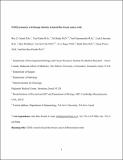| dc.contributor.author | Granit, R. Z. | |
| dc.contributor.author | Gabai, Y. | |
| dc.contributor.author | Hadar, T. | |
| dc.contributor.author | Karamansha, Y. | |
| dc.contributor.author | Liberman, Leslie D. | |
| dc.contributor.author | Waldhorn, I. | |
| dc.contributor.author | Maly, B. | |
| dc.contributor.author | Darash-Yahana, M. | |
| dc.contributor.author | Peretz, T. | |
| dc.contributor.author | Ben-Porath, Ittai | |
| dc.contributor.author | Regev, Aviv | |
| dc.contributor.author | Gat-Viks, Irit | |
| dc.date.accessioned | 2013-08-27T13:33:56Z | |
| dc.date.available | 2013-08-27T13:33:56Z | |
| dc.date.issued | 2012-09 | |
| dc.date.submitted | 2012-07 | |
| dc.identifier.issn | 0950-9232 | |
| dc.identifier.issn | 1476-5594 | |
| dc.identifier.uri | http://hdl.handle.net/1721.1/80293 | |
| dc.description.abstract | The mechanisms regulating breast cancer differentiation state are poorly understood. Of particular interest are molecular regulators controlling the highly aggressive and poorly differentiated traits of basal-like breast carcinomas. Here we show that the Polycomb factor EZH2 maintains the differentiation state of basal-like breast cancer cells, and promotes the expression of progenitor-associated and basal-lineage genes. Specifically, EZH2 regulates the composition of basal-like breast cancer cell populations by promoting a ‘bi-lineage’ differentiation state, in which cells co-express basal- and luminal-lineage markers. We show that human basal-like breast cancers contain a subpopulation of bi-lineage cells, and that EZH2-deficient cells give rise to tumors with a decreased proportion of such cells. Bi-lineage cells express genes that are active in normal luminal progenitors, and possess increased colony-formation capacity, consistent with a primitive differentiation state. We found that GATA3, a driver of luminal differentiation, performs a function opposite to EZH2, acting to suppress bi-lineage identity and luminal-progenitor gene expression. GATA3 levels increase upon EZH2 silencing, mediating a decrease in bi-lineage cell numbers. Our findings reveal a novel role for EZH2 in controlling basal-like breast cancer differentiation state and intra-tumoral cell composition. | en_US |
| dc.language.iso | en_US | |
| dc.publisher | Nature Publishing Group | en_US |
| dc.relation.isversionof | http://dx.doi.org/10.1038/onc.2012.390 | en_US |
| dc.rights | Creative Commons Attribution-Noncommercial-Share Alike 3.0 | en_US |
| dc.rights.uri | http://creativecommons.org/licenses/by-nc-sa/3.0/ | en_US |
| dc.source | Regev via Courtney Crummett | en_US |
| dc.title | EZH2 promotes a bi-lineage identity in basal-like breast cancer cells | en_US |
| dc.type | Article | en_US |
| dc.identifier.citation | Granit, R Z, Y Gabai, T Hadar, Y Karamansha, L Liberman, I Waldhorn, I Gat-Viks, et al. “EZH2 promotes a bi-lineage identity in basal-like breast cancer cells.” Oncogene 32, no. 33 (September 17, 2012): 3886-3895. | en_US |
| dc.contributor.department | Massachusetts Institute of Technology. Department of Biology | en_US |
| dc.contributor.approver | Regev, Aviv | en_US |
| dc.contributor.mitauthor | Regev, Aviv | en_US |
| dc.relation.journal | Oncogene | en_US |
| dc.eprint.version | Author's final manuscript | en_US |
| dc.type.uri | http://purl.org/eprint/type/JournalArticle | en_US |
| eprint.status | http://purl.org/eprint/status/PeerReviewed | en_US |
| dspace.orderedauthors | Granit, R Z; Gabai, Y; Hadar, T; Karamansha, Y; Liberman, L; Waldhorn, I; Gat-Viks, I; Regev, A; Maly, B; Darash-Yahana, M; Peretz, T; Ben-Porath, I | en_US |
| dc.identifier.orcid | https://orcid.org/0000-0001-8567-2049 | |
| mit.license | OPEN_ACCESS_POLICY | en_US |
| mit.metadata.status | Complete | |
